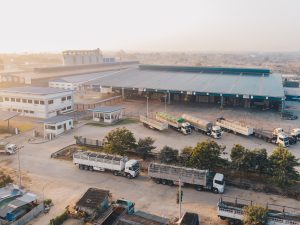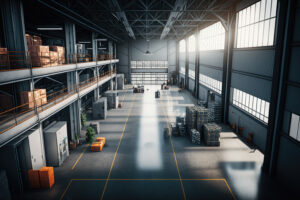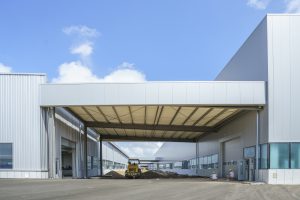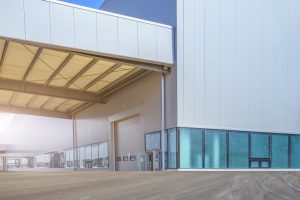Sustainable construction is no longer a trend—it’s a necessity. In bustling commercial hubs like Khobar and Dammam, developers are increasingly shifting toward green building practices for strip malls. Why? Because sustainable construction not only reduces environmental impact but also helps save money and attract tenants who are conscious of their carbon footprint. If you’re considering building a strip mall in Khobar or Dammam, adopting sustainable practices could set you apart in the marketplace.
What Is Sustainable Construction?
Sustainable construction refers to the use of eco-friendly building materials and practices that minimize the negative impact on the environment. From energy-efficient lighting systems to low-emission building materials, every aspect of the construction process can be optimized for sustainability. This approach aims to reduce carbon emissions, waste, and energy consumption during both the building phase and the operation of the strip mall.
The Benefits of Sustainable Construction for Strip Malls
1. Cost Savings in the Long Run
One of the most significant benefits of sustainable construction is long-term cost savings. By using energy-efficient systems, developers can reduce utility costs for the strip mall tenants. Solar panels, LED lighting, and advanced insulation systems lower energy consumption, cutting down on both operational expenses and environmental impact.
2. Attracting Eco-Conscious Tenants
As more consumers and businesses become environmentally aware, tenants are prioritizing sustainable spaces. By offering a strip mall designed with eco-friendly practices, you’re not only appealing to customers but also businesses that want to operate in sustainable buildings. This can give you a competitive edge in a saturated market.
3. Boosting Property Value
Sustainably built properties are more attractive to investors and buyers. A green building can command higher rents, improve tenant retention, and generally increase the property’s market value. Sustainable construction often comes with certifications like LEED (Leadership in Energy and Environmental Design), which can further enhance the desirability of your strip mall.
Sustainable Construction Methods for Strip Malls
1. Green Building Materials
The choice of materials plays a significant role in sustainable construction. Materials such as recycled steel, low-VOC (Volatile Organic Compounds) paints, and sustainably harvested wood can reduce the environmental impact of your construction project. Additionally, these materials are often more durable, reducing the need for future repairs and replacements.
2. Energy-Efficient Systems
Energy-efficient lighting, HVAC systems, and renewable energy sources like solar panels are critical components of sustainable strip mall construction. Installing energy-efficient equipment not only reduces the building’s carbon footprint but also lowers utility costs for tenants, making the strip mall more appealing to businesses.
3. Water Conservation Systems
Water efficiency is another crucial aspect of sustainable construction. Installing low-flow faucets, water-efficient irrigation systems, and even rainwater harvesting solutions can significantly reduce water usage. This is especially important in regions like Khobar and Dammam, where water scarcity is a concern.
Why Khobar and Dammam Are Ideal for Sustainable Strip Mall Construction
1. Climate and Energy Efficiency
The hot and arid climate in Khobar and Dammam makes energy-efficient construction particularly relevant. Implementing solar panels and advanced insulation can make a significant difference in energy consumption, especially when it comes to air conditioning—a major expense in the region.
2. Growing Demand for Green Spaces
There is an increasing demand for sustainable spaces in Saudi Arabia, especially as the country moves toward Vision 2030, which focuses on reducing environmental impact. In commercial areas like Khobar and Dammam, this trend is becoming more apparent, and developers who lead the charge in sustainable building will likely have an advantage in the marketplace.
Challenges and Solutions for Sustainable Strip Mall Construction
1. Higher Initial Costs
One of the most common concerns for developers is the higher upfront cost associated with sustainable construction. While eco-friendly materials and technologies can be more expensive, the long-term savings in energy and maintenance far outweigh the initial investment. Moreover, government incentives and green building certifications can help offset these costs.
2. Adapting Traditional Designs
Many strip mall designs are outdated and focus solely on maximizing space without considering sustainability. Updating these designs to include sustainable practices can be challenging but highly rewarding. Work with architects and engineers experienced in green building to incorporate energy-efficient layouts and eco-friendly materials into the design from the beginning.
Steps to Implement Sustainable Construction in Your Strip Mall Project
1. Partner with Sustainable Architects and Builders
To ensure that your strip mall project is as sustainable as possible, it’s essential to work with experts in green construction. These professionals understand the latest technologies and materials, ensuring your building is both eco-friendly and cost-effective.
2. Use Smart Technology for Efficiency
Integrating smart technology in your strip mall design can help monitor and optimize energy use. For example, smart meters can provide real-time data on electricity, water, and gas consumption, allowing you and your tenants to identify areas where efficiency can be improved.
3. Focus on Waste Management During Construction
Sustainable construction isn’t just about the finished building—it’s also about the process. Ensure that waste materials are recycled where possible and that the construction site follows environmentally friendly practices, such as reducing emissions from machinery and minimizing water usage.
Conclusion: The Future of Strip Mall Construction in Khobar and Dammam Is Green
As Khobar and Dammam continue to grow as commercial hubs, the future of strip mall construction lies in sustainable practices. By building with eco-friendly materials, energy-efficient systems, and a focus on water conservation, you’ll create a retail space that benefits the environment, your tenants, and your bottom line. Sustainable strip mall construction not only helps the planet but also positions your development as a forward-thinking and profitable investment.







